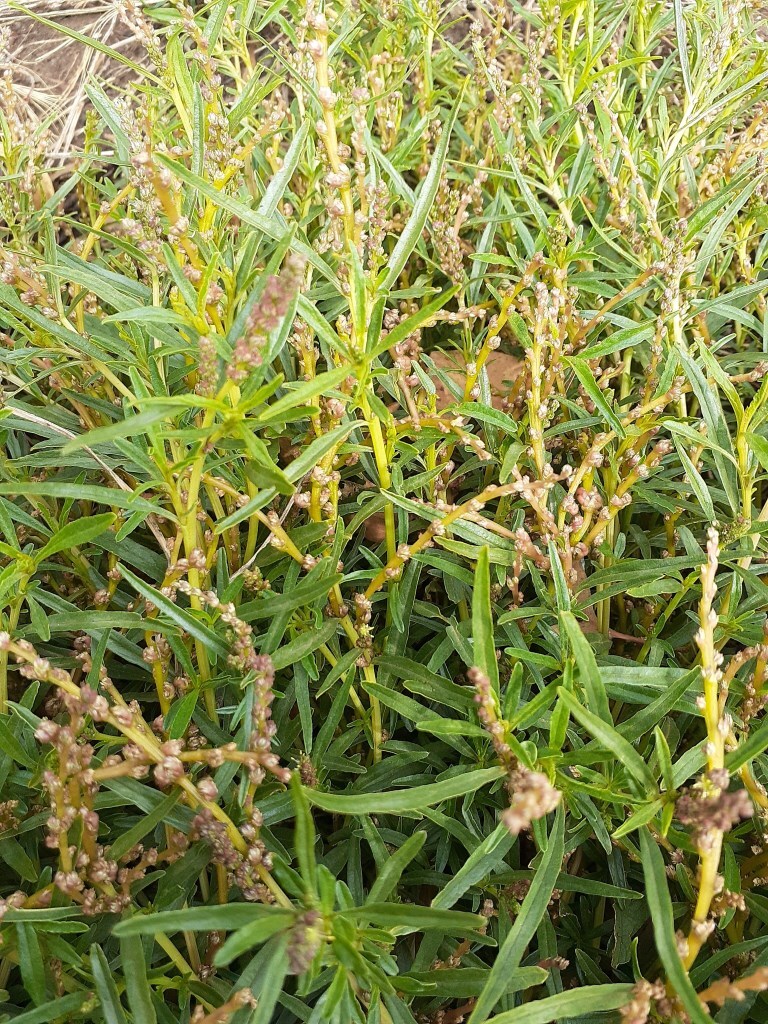Amaranthus muricatus
(Moq.) Hieron. Rough-fruit AmaranthProstrate or weakly ascending, ± glabrous annual. Stems to c. 60 cm long. Leaves subsessile, oblong to narrowly lanceolate, 1–10 cm long, 2–10 mm wide; apex obtuse or emarginate, sometimes shortly mucronate. Inflorescence spicate, sometimes interrupted, with compact clusters of flowers, terminal, simple or branched, mostly 4–10 cm long. Flowers unisexual; bracts ovate, c. two-thirds as long as tepals, bracteoles rudimentary; tepals 5 (occasionally 4 and within same inflorescence), narrowly obovate, c. 2 mm long, acute; stamens 3. Utricle indehiscent, shortly exceeding perianth, flattened-globoid, bullate; seed lenticular, blackish, shiny, c. 1 mm diam. Flowers Nov.–May.
MuM, Wim, VVP, VRiv, MuF, GipP, WaP, Gold. Also naturalised WA, SA, NSW. Native to South America. Occasional on roadsides, vacant paddocks and suburban allotments etc. (e.g. Ouyen, Kerang, Birchip, Bridgewater, Yarrawonga, Melbourne suburbs).
Walsh, N.G. (1996). Amaranthaceae. In: Walsh, N.G.; Entwisle, T.J., Flora of Victoria Vol. 3, Dicotyledons Winteraceae to Myrtaceae, pp. 199–215. Inkata Press, Melbourne.
 Spinning
Spinning


